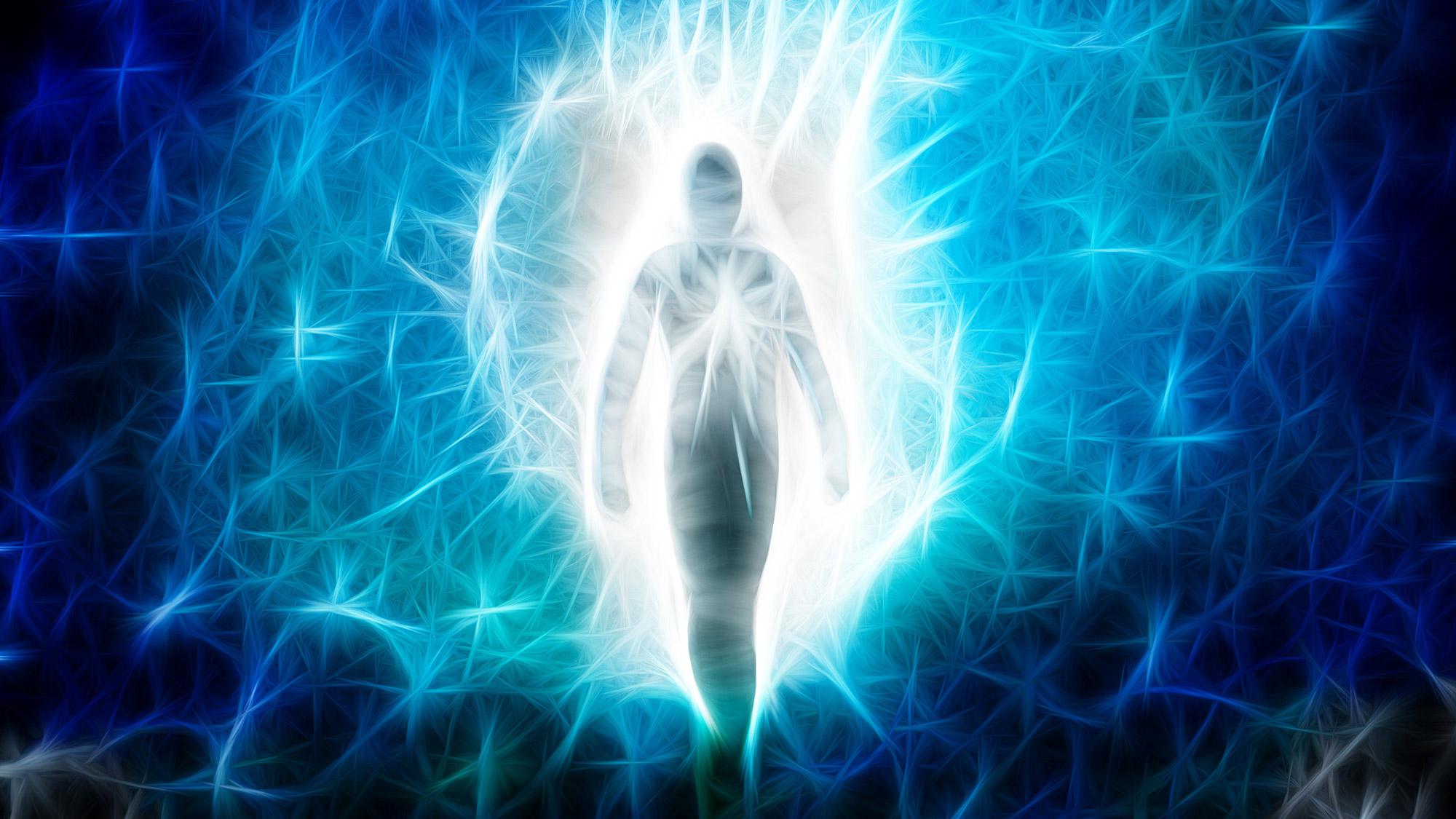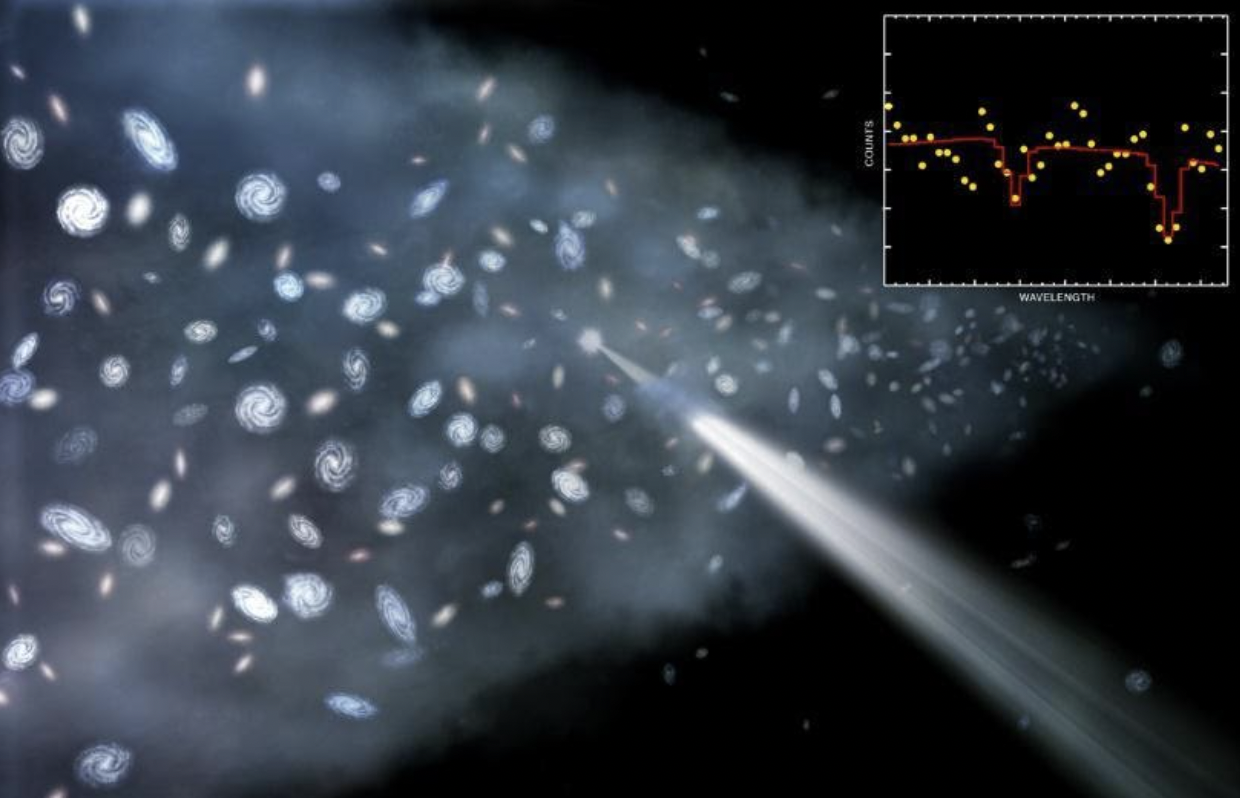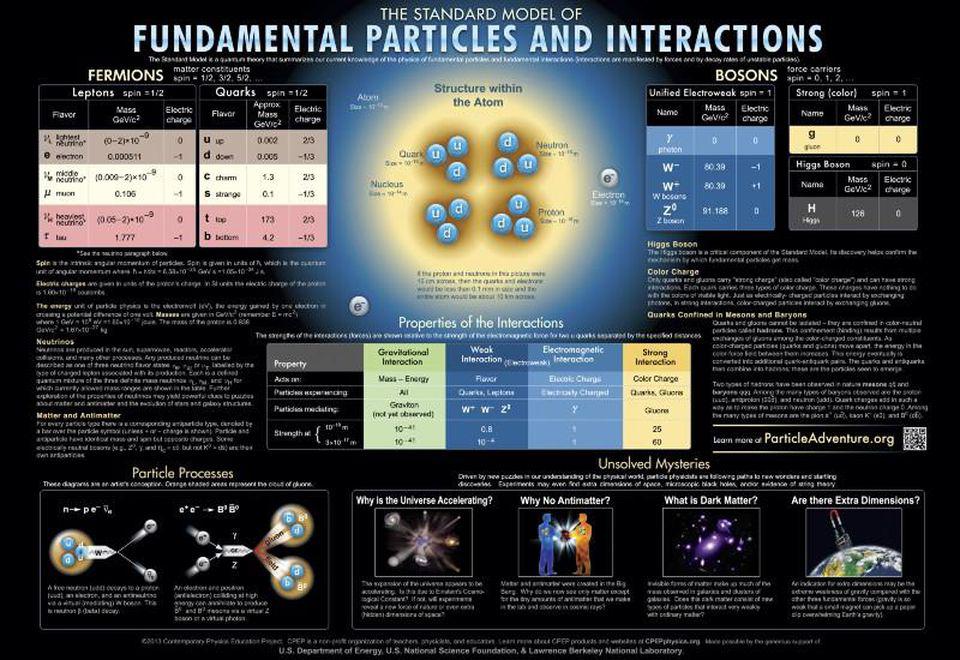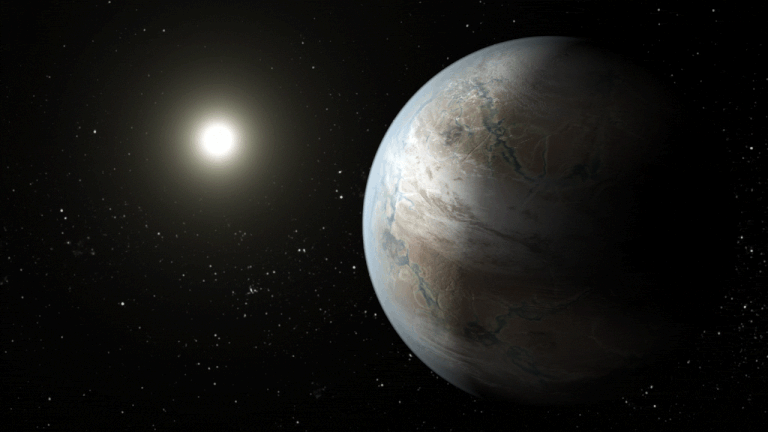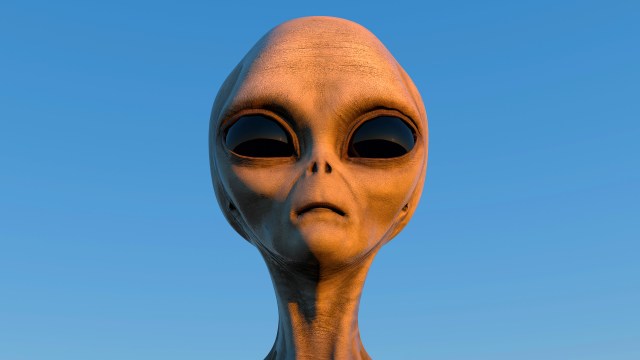Ask Ethan: How do fundamental particles create consciousness?

- At a fundamental level, a human being is made of only a small set of quantum particles, bound together through just four fundamental interactions to create all of known reality.
- That includes some phenomena that are incredibly complex, including those of consciousness, intelligence, and sentiency.
- How odd is it that these particles and forces fit together so precisely as to enable conscious beings like us to exist? It’s a cutting-edge question, but one that we’re closer than ever to answering definitively.
In theory, everything that exists in the physical Universe is dependent only on the same fundamental entities and interactions that we find by splitting matter apart down to the smallest possible scales. Living creatures can be divided into cells; cells themselves are composed of organelles; organelles can be broken down into molecules; molecules are made up of atoms; atoms are comprised of electrons and atomic nuclei; electrons cannot be broken down further, but nuclei themselves consist of quarks and gluons. We should, therefore, be able to take these fundamental constituents of matter — quarks, gluons, and electrons — and assemble them in various ways to explain everything that we encounter in everyday life.
But with just these simple building blocks and the four fundamental interactions, is that really possible? Can we explain everything, including conscious human beings? It’s an enormous challenge, for sure. This week’s Ask Ethan inquiry comes from Ottho Heldring, to whom it seems impossible that this could simply be the result of natural conditions with random chance thrown in:
“It has always puzzled me how come the particles & forces in the original quark gluon soup fit precisely to form:
- nuclei, and when joined by electrons,
- atoms (each with their distinct properties),
- countless molecules (each with their distinct properties),
- capable of forming life,
- which can achieve consciousness,
- and ultimately lead to astrophysicists?
This precise “fitting” can hardly be a pure coincidence.”
Is that a true assertion? Let’s look at the evidence, to the best of our knowledge today, to try to find out.
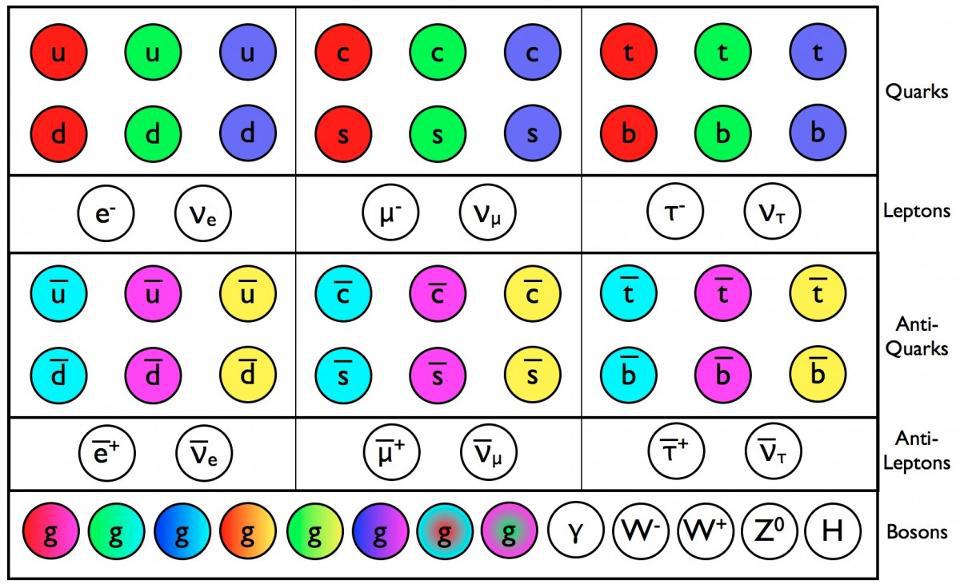
All of the particles of the Standard Model — which represents the known constituents of the Universe, excluding the unknowns that are currently represented by the placeholders of dark matter and dark energy — fall into two categories: fermions and bosons. The fermions are what we think of as the constituents of matter: quarks and leptons. Quarks bind together to make protons, neutrons, and all the other heavy composite particles, while the leptons consist of both the charged particles that bind to and orbit protons and neutrons (e.g., the electron) as well as the low-mass, uncharged particles that barely interact with anything at all: the neutrinos.
But the bosons are just as important to matter. These particles mediate all of the (non-gravitational) forces and interactions that take place between particles. Although there are 12 different bosons, they’re grouped into describing just three interactions.
- The 8 gluons mediate the strong nuclear force, and act only on particles with a color charge: the quarks, antiquarks, and other gluons.
- The 3 weak bosons, the W+, W-, and Z0, are all massive and mediate the weak nuclear force. If you can radioactively decay or be a product of a radioactive decay (including every one of the fermions), these bosons can interact with you.
- And the 1 photon, lonesome as it is, is responsible for mediating the entirety of the electromagnetic force. All charged particles experience the electromagnetic interaction, including every fermion except the neutrinos and antineutrinos.
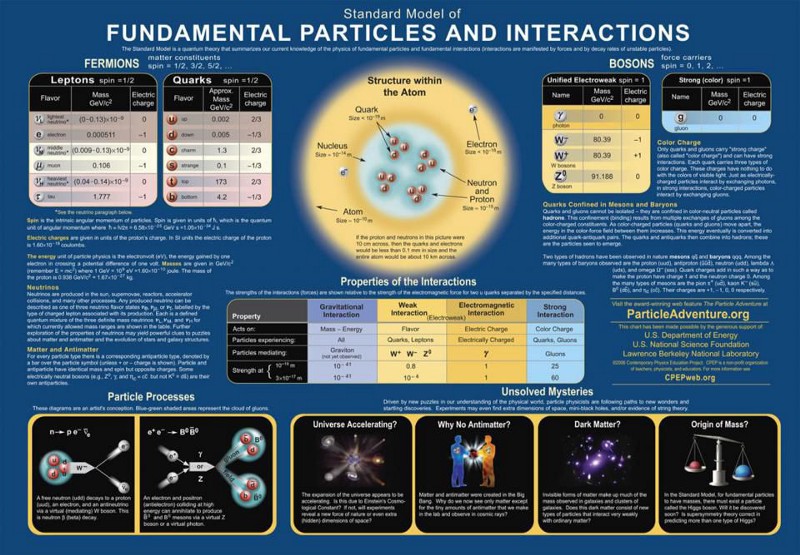
These forces have different properties from one another as far as their behavior goes. The electromagnetic force, for example, is a long-range force: if you have two charged particles, they’re going to attract or repel one another in proportion to the charge on each one and inversely proportional to the distance squared between them. The farther away you get, the weaker the electromagnetic force is, but it never drops to zero, not even for arbitrarily large distances. A positive and negative charge, however, cancel out overall; if you get two of them together, they make an electrically neutral object, and at large distances, the electric force from a neutral object goes to zero.
The strong nuclear force, on the other hand, works in a very different fashion. At very small distances, the strong force between color-charged objects asymptotes to zero, but as you increase the separation between them, the force increases. This is true as long as there’s a net color charge, but if you’re color-neutral, the force also goes to zero, just as it does for a neutral electromagnetic object. The only catch is that the way you get a “colorless” object is by having either three colors (red, green, blue), three anticolors (cyan, magenta, yellow), or a color-anticolor (red-cyan, green-magenta, or yellow-blue) combination.

For simplicity’s sake, we can ignore the weak nuclear force, except to note that if a fundamental or composite particle is inherently unstable, meaning that it’s energetically favorable to decay into a particle or set of particles with less rest mass, the weak interaction is how it will get there.
In order to understand what sorts of structures we’re able to form in the Universe, you have to go back to the early stages and see what arises, and why. From that point onward, we can look at what remains, and then begin to understand what sorts of more complex structures are allowed to emerge.
In the early stages of the hot Big Bang, there was enough available energy and dense enough conditions so that collisions were frequent, enabling the creation of every one of the fundamental particles (and antiparticles) in great numbers. As the Universe expands and cools, however, there becomes less energy available (via E = mc²) to create new particles, but it’s very easy for particle-antiparticle pairs to annihilate away. Additionally, any unstable particles will decay, via the weak interaction, into more stable ones.
After a relatively short period of time passes, the Universe is made mostly of photons, electrons, positrons, neutrinos and antineutrinos, and a little bit of up-and-down quarks, which slightly outnumbered the anti-up and anti-down quarks.

This is the first step: up-and-down quarks will bind together, forming protons and neutrons. The reason is simple, as up-and-down quarks have electric charges of +⅔ and -⅓, respectively, so at very small distances, the electromagnetic forces push like charges apart. You can’t push them too far apart, however, or the strong nuclear force will get large, causing these particles to “snap” back together just like a stretched spring will increase in strength until it snaps back together.
So why do you only get protons and neutrons from up-and-down quarks?
It takes three fermions (and quarks are fermions) to make a color-neutral object, so either you can have two up and one down quarks (a proton), or you can have one up and two down quarks (a neutron). You can’t have three up or three down quarks, because there’s another rule: the Pauli Exclusion Principle, which prevents two identical fermions from having the same quantum state. Quarks have a spin, so you can have two identical fermions in a proton or neutron if one is “spin up” and the other is “spin down,” but there’s no way to get a third quark of the same type in there. The strong and electromagnetic forces, combined, explain why protons and neutrons exist.

From protons and neutrons, the Universe can then build up larger and more massive atomic nuclei. Again, the strong and electromagnetic forces come into play here. Under the electromagnetic force, protons will repel one another, while neutrons will neither attract nor repel protons or other neutrons. However, the strong nuclear force, you’ll remember, acts between all objects with a color charge, and if you get protons and/or neutrons close enough together, the quarks within one object will “see” the quarks within another object, enabling them to exchange gluons and experience the strong nuclear force.
Overall, protons and neutrons are each color-neutral, so at long distances away from them, the strong nuclear force drops to zero and can be neglected. But at very close distances, the “springiness” between the closest quarks in either a
- proton-proton,
- neutron-neutron,
- or proton-neutron pair
becomes substantial. So long as the right conditions arise — i.e., high enough temperatures and densities — and the combination of protons and neutrons that gets made is stable against radioactive decay, you can wind up with a variety of heavy, stable atomic nuclei.

All stable atomic nuclei are positively charged, whereas the electrons (left over from the early Universe after the positrons all annihilated away with most of the electrons, leaving a neutral Universe) are negatively charged. Electrons don’t experience the strong nuclear force, but they do experience the electromagnetic force. They’ll be attracted to atomic nuclei owing to the fact that opposite electric charges attract, and they can form bound states, with electrons entering various orbitals around each atomic nucleus.
Because the electrons are so much lighter than the atomic nuclei, with 1836 electrons required to equal the mass of one proton, the nuclei sit relatively motionless at the centers of each atom, while the electrons orbit at high speeds in cloud-like configurations around them. The rules of quantum mechanics — and again, the Pauli Exclusion Principle plays a major role — determine what sort of configurations and shapes the electron shells take on, which in turn determines how atoms of various types will bind together with one another. From just the strong and electromagnetic interactions, we get a wide variety of atoms.

Now, with much lower temperatures, these atoms can link up in virtually endless combinations. Even though atoms themselves are electrically neutral, they’re made up of positive and negative charges.
- Under some circumstances, one or more electrons can get transferred from an atom that holds its outermost electrons loosely to one that’s eager to acquire additional electrons, creating ions and ionic compounds.
- Under other circumstances, neutral atoms can link up with one another, forming an unlimited variety of combinations and bonds, resulting in molecules.
- And once ions, compounds, and molecules form, they can interact.
Remember that protons and neutrons can bind together to form an atomic nucleus, despite each one being “color-neutral” on its own, because the quarks inside each one can exert forces on the quarks inside an adjacent one. Similarly, the negatively charged electrons and the positively charged atomic nuclei inside molecules can exert forces on one another, forming larger molecules, creating forces and modifying structures between molecules, and even enabling various molecular mechanisms, like lock-and-key (i.e., ligand-gated) and electric-charge-sensitive (i.e., voltage-gated) channels.
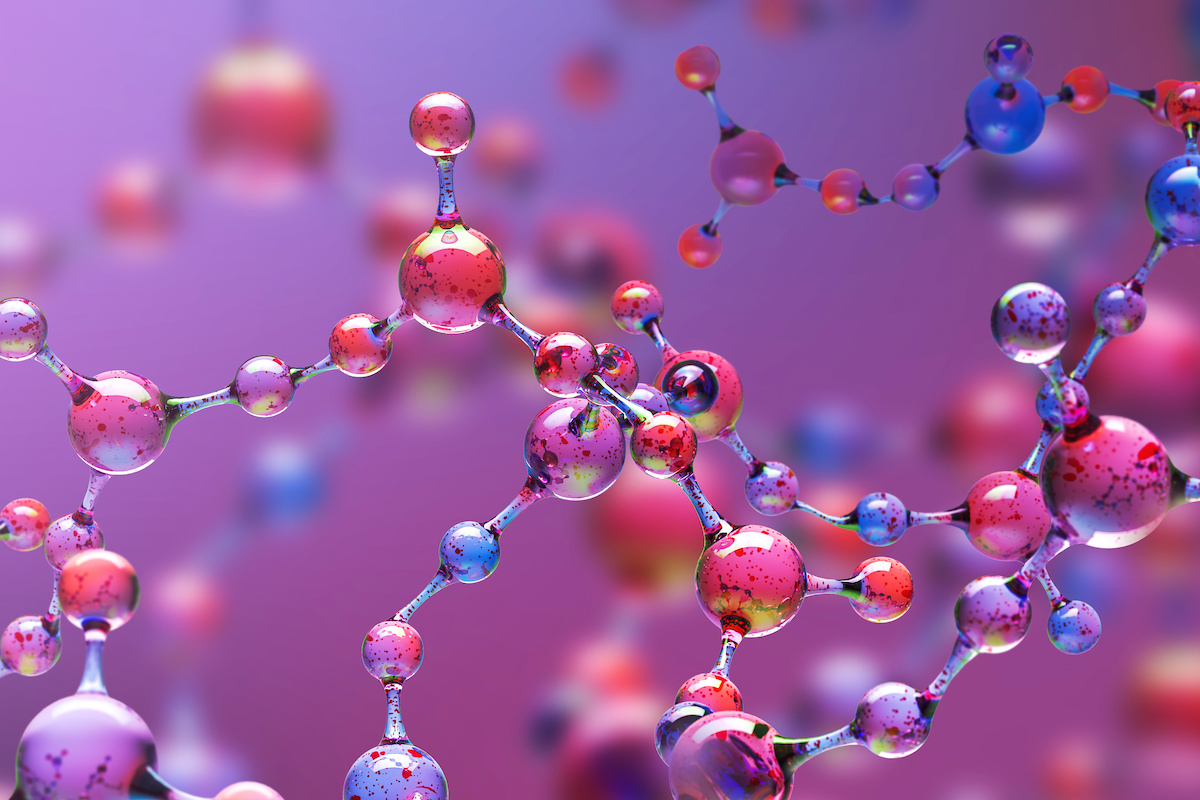
Just like that, with only a few of the fundamental particles and some general properties of two of the fundamental forces, we can go from the elementary constituents of matter to molecules of limitless complexity.
So how do we go from molecules to life, from early life to human beings, and from a lack of consciousness to consciousness?
The emergence of life from non-life certainly occurred, but we’re still puzzling out precisely how it occurred on our planet. However, the forces of electromagnetism and gravity, given the conditions that arose naturally and the presence of complex molecules, seem to be all that’s required. Similarly, life has survived, thrived, and evolved over billions of years, giving rise to the diverse set of organisms that exists today, including us. As far as we can tell, what makes a “living being” alive is simply the presence of electricity: the flow of electrons. Although there are many with wild ideas about what consciousness is and what its connection to the quantum realm might be, it’s possible — perhaps even likely — that simple electricity (i.e., the flow of electrons throughout a brain and/or nervous system in animals) is enough, given the right external configuration of atoms and molecules, to create the phenomenon we identify as consciousness.
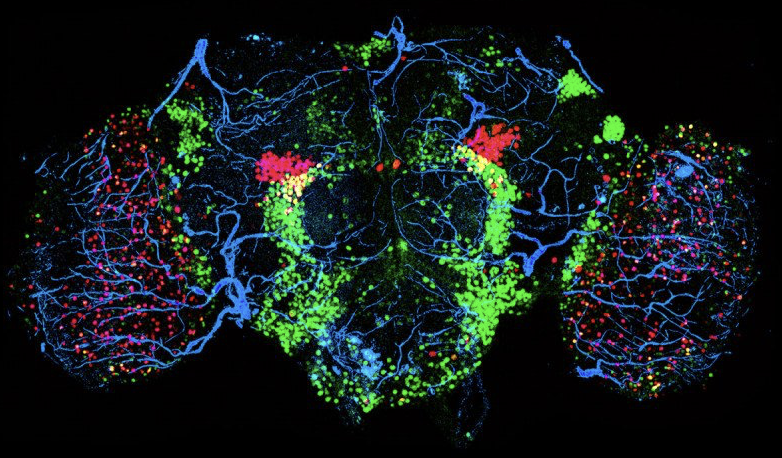
Yes, it’s a remarkable fact that, with just the four fundamental forces in the Universe of gravity, electromagnetism, and the strong-and-weak nuclear forces, we can form atomic nuclei, atoms, molecules, life, complex-and-differentiated life, where consciousness emerges, and some of those conscious beings can study the Universe itself. We can learn how the Universe works and how we came to arise within it, with some of us choosing to become astrophysicists in this Universe: a piece of the Universe that, for a brief period of cosmic time, can study the cosmos as a whole and for all-time.
But this is not necessarily miraculous. So long as there are a few simple rules and properties to nature:
- some of which are negligible at short distances but increase in force as distances increase,
- others of which are strong at short distances but become weaker at great distances,
- and where there are multiple types of charges, some of which are always attractive and some of which repel or attract depending on the relative types of charge,
complex structures and seemingly endless possibilities can’t help but emerge. With the right configurations, electrons can move through various pathways, creating electric currents that drive life processes and — quite possibly — are wholly responsible for creating the phenomenon that we call consciousness.
If the laws of physics were so different that we couldn’t have come into existence, we never would have arisen to find these things out. Alas, we only have the one Universe, with the rules and limitations that it possesses, to study. Until we either find another, or discover precisely why and how our Universe has the rules and laws that it does, questions such as “Do the rules that our Universe plays by have a cause or a designer?” will firmly remain outside of the realm of science: beyond what it’s possible to know.
Send in your Ask Ethan questions to startswithabang at gmail dot com!
